Instagram Competitor Analysis to Fuel Brand Growth

Table of Contents
Circa 2010, Instagram was a casual photo-sharing app for silly selfies and over-saturated food pics. In just over a decade, the app has evolved into one of social media’s most prominent platforms with over 1 billion users. Some 90% of users follow a brand on Instagram and there are over 200 million business accounts on the app as well. According to the 2025 Sprout Social Index™, 82% on consumers have Instagram profiles and 51% of consumers prefer Instagram to keep up with trends and cultural moments.
It’s imperative for brands to analyze the social media competition and craft a game plan to stand out against their competitors. An Instagram competitor analysis can help brands compete with rivals in the marketplace by highlighting pieces of their strategy from content gaps to publishing behavior.
You can seek opportunities in the data to outperform your competitors and think about what is most valuable for your followers. This will save you time because you aren’t reinventing the wheel, but rather using what you know will work.
Let’s break down how an Instagram competitor analysis can help level the playing field so you can up your Instagram analytics and reach your goals.
What is a competitor analysis on Instagram?
An Instagram competitor analysis is the strategic process of evaluating your competitor’s activity as benchmarking data and providing insight on the strengths and weaknesses of your competitor’s strategy overall.
This type of competitor analysis dives into the key Instagram metrics of audience growth, engagement and publishing patterns for both your brand and its competitors. Using this data, your team can establish benchmarks that guide your strategy, aiming to strengthen your content and engagement on social media, which can increase business impact.
Why should you do an Instagram competitive analysis?
Whether you’re a seasoned pro or starting a new account, an Instagram competitor analysis report provides insights that inform and improve your social strategy, so you can maintain an edge on the network. Here’s several reasons why you need to conduct an Instagram competitive analysis:
Establish your own KPIs through competitive benchmarking
Benchmarking your brand against competitors and related businesses will help you see how your business stacks up against others in the industry. Comparing your brand to a business of comparable size and resources can assist with setting goals on Instagram.
By analyzing key performance indicators (KPIs), your brand will be able to determine what type of content performed best, how often to post and more. Tracking your Instagram competitors’ KPIs will also help you keep a pulse on industry and social trends. Even better, you’ll be able to spot what doesn’t work for your peers and identify ways to stay ahead of the competition.
Ready to gain these powerful insights and elevate your Instagram strategy? Discover how easy it is to track your competitors and optimize your performance with Sprout.
How to do an Instagram competitive analysis?
Now you know why an Instagram competitive analysis is important, let’s deep-dive into your competitor’s strategies. To help you to understand your competitor’s Instagram strategy at a profile level, Sprout Social created the Instagram Competitors Report, which is available in Professional Plans and above.
To harness the full potential of the report, connect your Instagram Business Profile to Sprout Social. It’s easy, here’s how:
Step 1: Create an account using your business email and [start a free 30-day trial of the Professional Plan. You don’t even need a credit card.
Step 2: Convert to a Business Profile: If you’re using a Personal Instagram profile, switch to a Business Profile to unlock advanced features and metrics in Sprout Social.
Step 3: Connect Your Facebook Page: Link your Instagram Business Profile to your Facebook Page.
Step 4: Connect to Sprout Social: Follow the simple instructions within Sprout Social to connect your Instagram Business Profile.
Step 5: Navigate to “Reports > Competitors by Network > Instagram Competitors.”
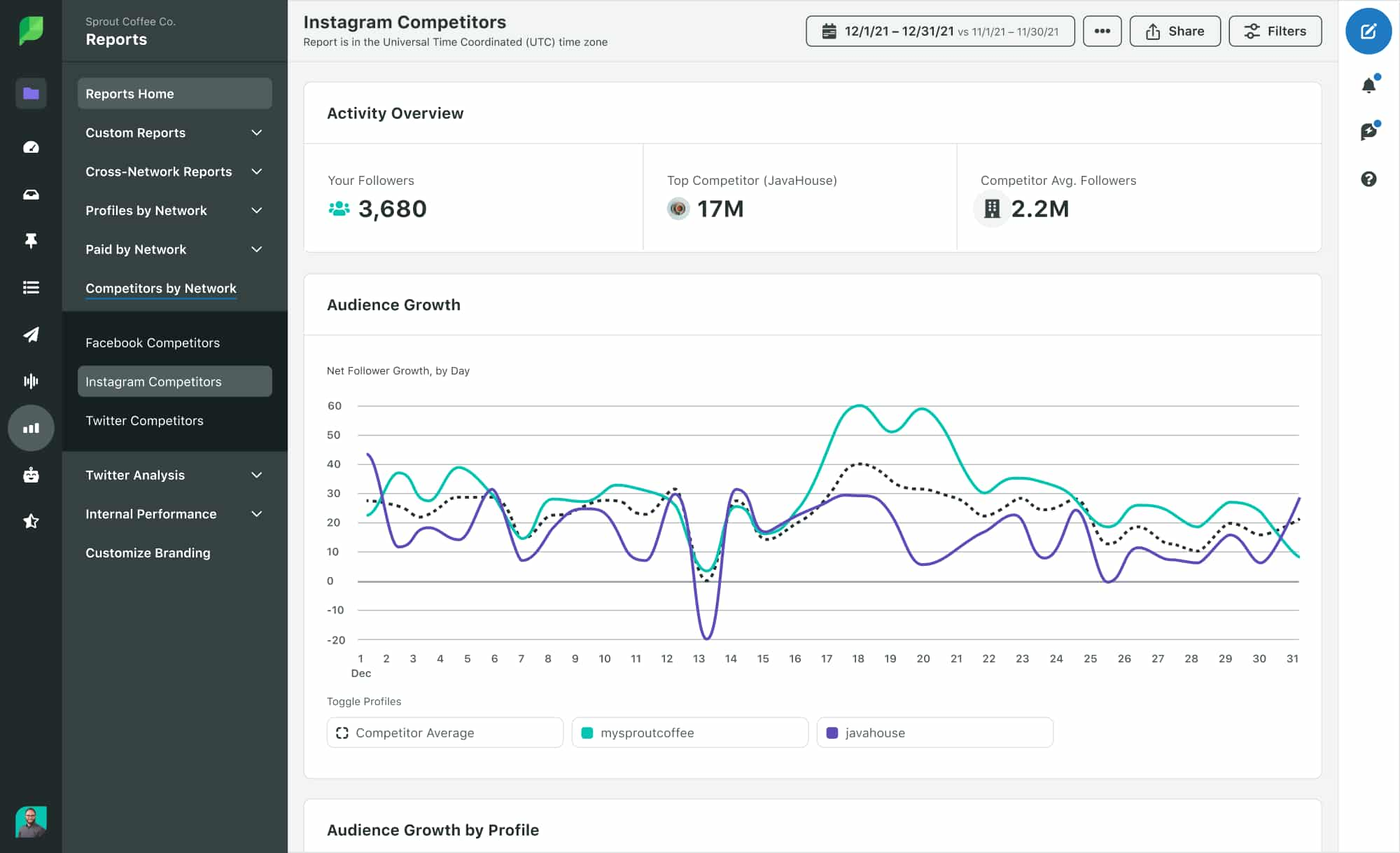
Customise your Instagram competitor’s report
Step 6: Use the filter menu at the top of the report to customize the data you want to see:
Select the timeframe you would like to analyze by clicking on the calendar icon in the top right corner.

Click on Your Profiles and Competitor Profile to select the Instagram accounts you would like to compare.
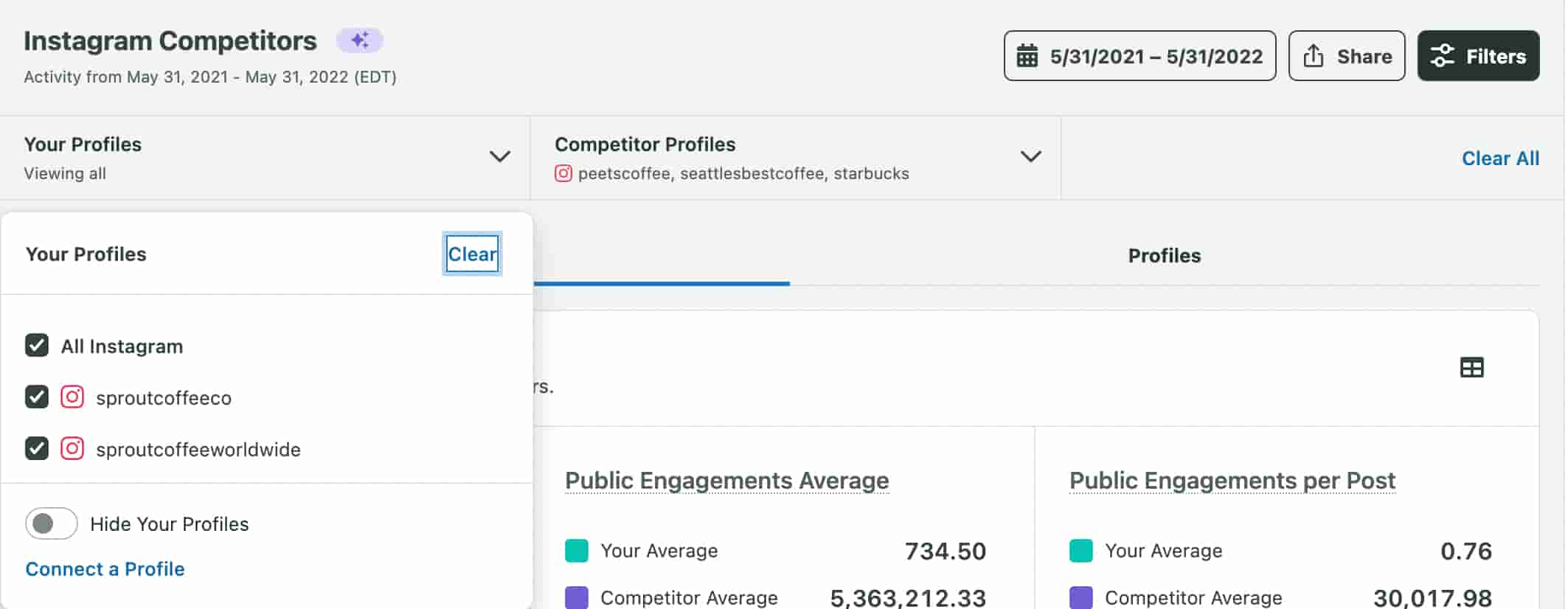
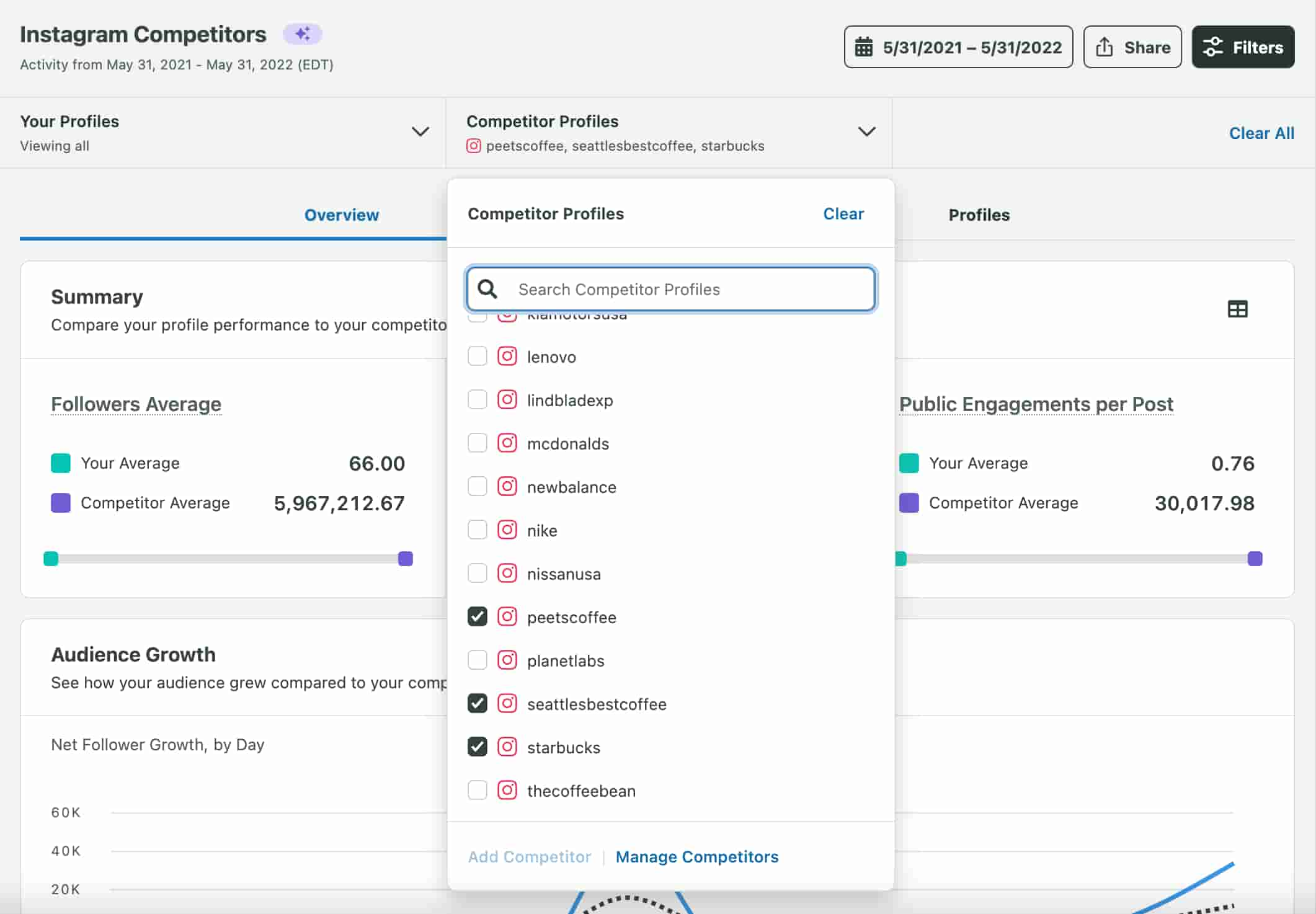
From here, you can simply scroll down to view various metrics.
Which Instagram competitive metrics are important?
Sprout’s Instagram Competitors Report includes average metrics for followers, engagement, audience growth, publishing behavior (the different types of content posted) and top posts. Interactive graphs and accompanying data charts showcase trends over time, making it easy for you to visualize growth patterns. You can also use Sprout’s Advanced Listening tools to learn about industry trending topics and hashtags.
We have plenty of metrics for your brand to learn from. Here’s a quick overview of what they mean and why they’re important:
1. Followers
A company’s number of followers represents social proof and brand affinity. Although follower count is a good indicator of audience size and brand loyalty, think of it as a complementary metric for engagement. In the early days of social, follower count was the main goal, but social metrics are more complex now.
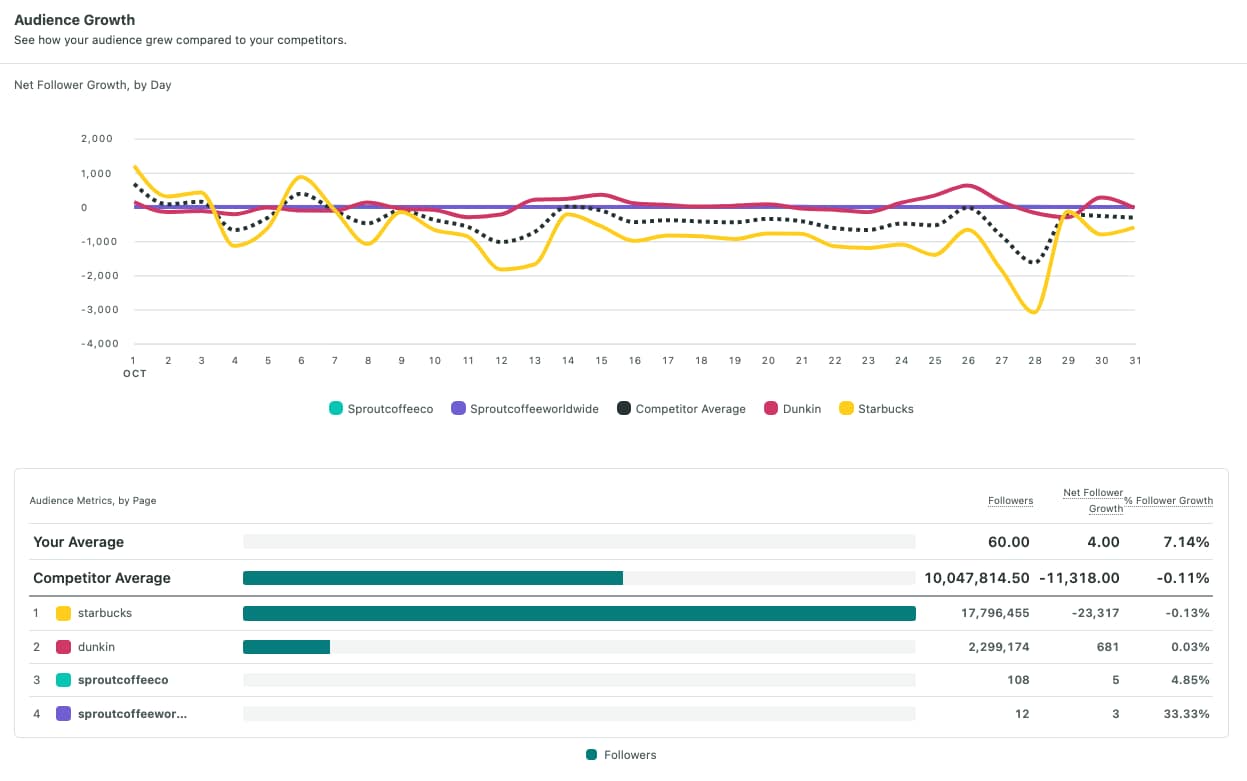
If an account has thousands of followers, but consistently low engagement, chances are they aren’t truly connecting with their audience. Conversely, a brand could have fewer followers, but consistent engagement, which could indicate they are tuned in with their audience and produce quality content.
2. Engagement
Sprout offers several different metrics for measuring engagement, including competitor averages. Engagement is one of the top metrics because it reflects how well your brand’s content resonates with your target audience. Engagement includes likes and comments, and each plays a different role in your analysis.
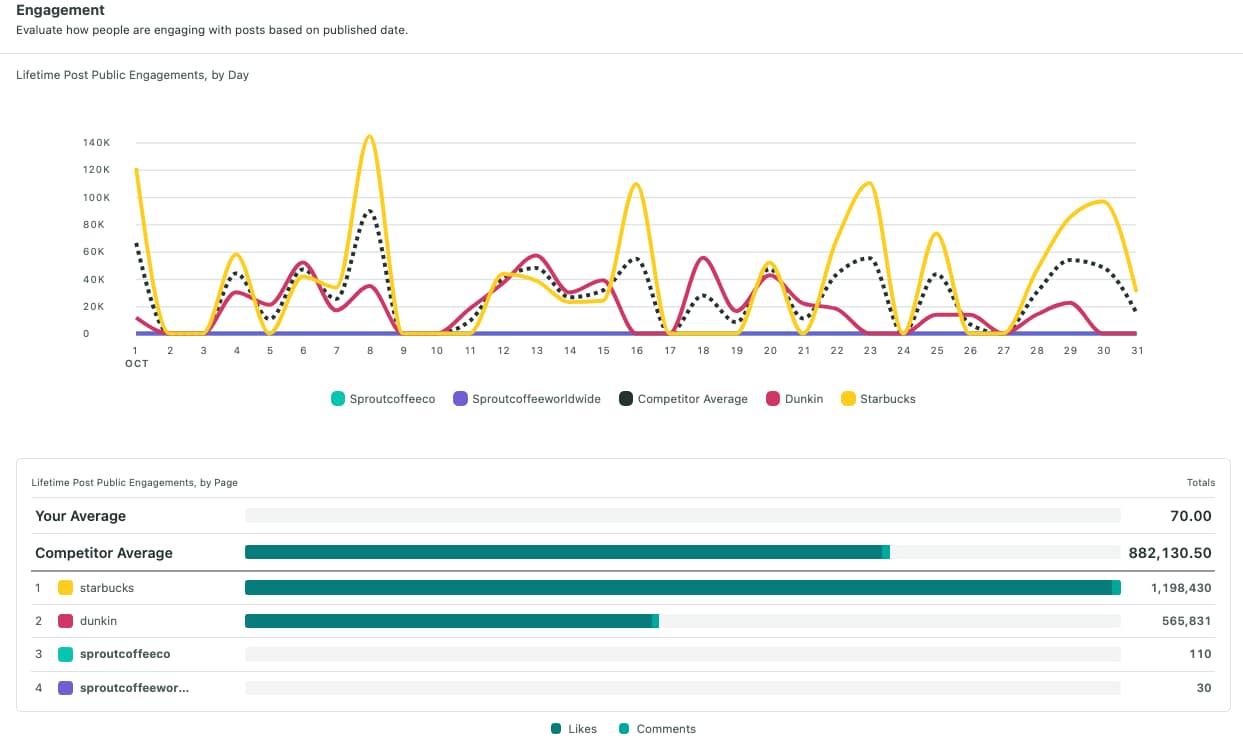
A post with a lot of likes and comments validates its quality. Likes show if users enjoy the post, while comments are more open-ended. Instagrammers flock to the comments to share reactions and feedback, indicating common sentiment—both positive and negative. Sprout offers several different metrics for measuring engagement, including competitor averages.
3. Audience growth
Remember that follower count is a form of social proof and brand affinity. More followers mean more eyes on your products and services, along with increased reach and engagement.
Use the Audience Growth section in Sprout to pinpoint peaks in new followers, and pair with the Sent Messages Report to understand what posts drove that growth. You can use this data to help inspire your upcoming content.
4. Publishing behavior
Publishing behavior refers to the different types of Instagram posts published during a selected time period. These include photos, carousels and video posts. Sprout Social offers an Optimal Send Time feature, but viewing the frequency of your competitors’ posts can help you determine if you’re publishing enough content.
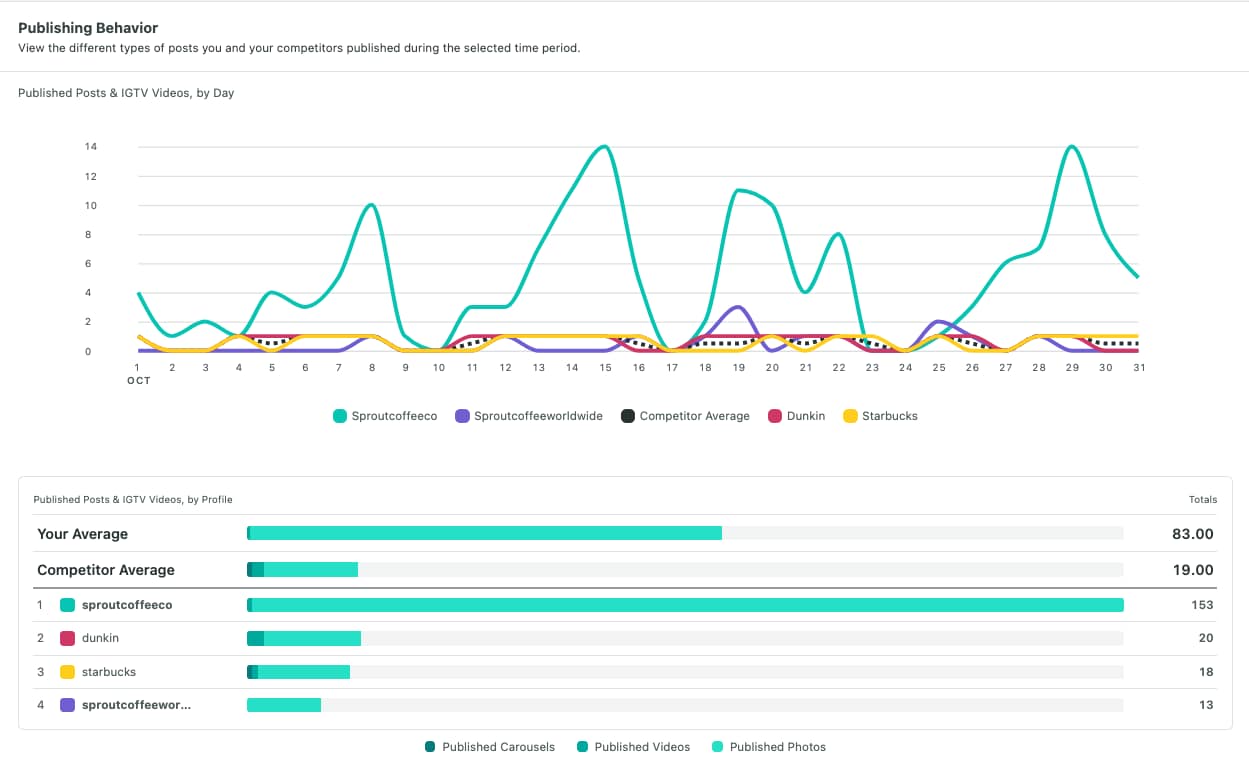
5. Top posts
Like engagement, analyzing top posts is an important metric because it highlights your competitors’ best content. Along with seeing high-performing posts, you can view how many engagements the post received. Use the Competitor Posts Report to dive deep and draw conclusions about why a post was so successful.
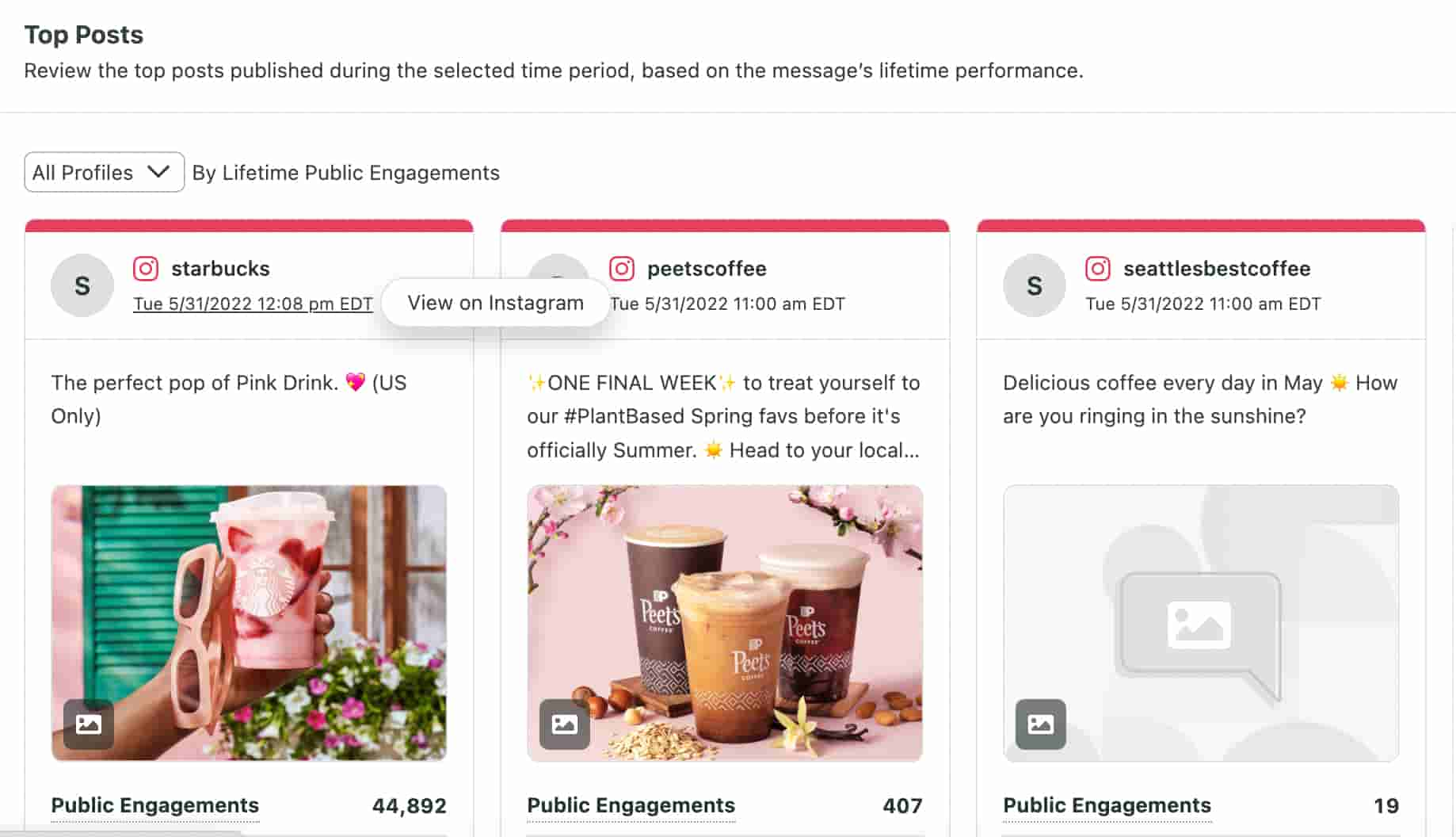
Did the post perform because it’s a valuable product tutorial? Was it part of a campaign? Find out what these posts accomplish that your content doesn’t and get back to the drawing board to improve your strategy.
6. Hashtags
Many brands use hashtags to boost their organic reach, so knowing which tags are the most relevant is key. Hashtags can drive growth to your page over time and capture brand sentiment.
Avoid copying competitor hashtags verbatim. Aim for a mix instead and try generating new ones, such as branded hashtags. Along with the most popular hashtags, pay attention to the number of hashtags per post.
You can view your competitors’ top three hashtags underneath the Profiles tab of the Instagram Competitors Report. Hashtags are ranked by the total number of public engagements the competitor received on all posts that use the hashtag. You can conduct further hashtag analysis with Sprout’s Advanced Listening tool. With Advanced Listening, you can learn more about relevant hashtags by using the Competitive Analysis Topic Template. This is a great tool for finding trending hashtags and conversations you might be missing out on.
Identify content gaps by analyzing competitors on Instagram
Analyzing your Instagram competitors will help you identify content gaps in your strategy. For example, if you notice your competitors’ top posts include videos with high engagement, then you should consider investing more in video.
On the other hand, you can use an Instagram competitor analysis to identify where your competitors are falling flat. If you notice your rivals aren’t posting frequently or never respond to comments, take it as a sign to fill a gap for your audience.
Even the biggest brands have room for improvement, which leads us to our next point about crafting better content for your audience.
Create better content for your followers
Although they are your rivals, your Instagram competitors can help you craft better content for your followers. Look to your competitors for inspiration and add your own spin to it. If you notice a brand telling a story well, brainstorm a different angle.
If you notice an industry trend on Instagram, how can you use that to promote your products or services while showcasing your brand’s personality and value? What brands aced the trend and why did their content gain so much attention?
Consider the always-popular Instagram giveaway. They typically encourage followers to enter by completing several tasks such as following the brand and tagging a friend in the comments. In this situation, you would look at brands within your niche and take note of the type of prize, the call to action, and which companies received the highest engagement and largest audience growth. After determining the top brand giveaways trending in your market, ideate how to stand out based on your analysis.
How to find your competitors on Instagram
There are three types of social media competitors that you should be aware of:
Direct competitors: Direct competitors are businesses or brands that offer the same or very similar products or services as your company within the same market. They target the same audience as you and fulfill the same needs, making them your primary rivals in attracting customer attention and engagement on platforms like Instagram.
For example, if you’re a bookstore, you likely know your competitors: barnesandnoble, booksamillion, halfpricebooks, powellsbooks, amazonbooks.
Indirect competitors: Indirect competitors provide different products or services that satisfy the same or similar customer needs as yours but in a different way. They are not direct rivals but compete for the same discretionary spending of customers.
Using the same bookstore example as above, indirect competitors would be book clubs and literary influencers who might not sell books directly but influence where and what books people buy, such as netgalley, colleenhoover or peruseproject. And other competitors could be publishers who sell books directly to consumers through their websites or special promotions, bypassing traditional bookstores.
Emerging competitors: Emerging competitors are new or growing companies that are starting to gain traction in the market and could potentially become direct or indirect competitors in the future. These competitors are often innovative and can disrupt the market with new approaches, technologies, or business models. They are important to monitor as they can quickly rise to become significant players.
For example, new online platforms that offer innovative ways to access books, such as subscription-based reading services or digital book libraries may change consumer habits from purchasing physical books at traditional bookstores. Think: cratejoy, bookofthemonth, bookbub.
3 Instagram competitor analysis tools
1. Sprout Social
Sprout Social equips social media marketers with a comprehensive understanding of competitors’ performance on social media from multiple angles and data points.
With Sprout’s suite of competitive reports, you can assess and optimize your social strategy with rich data points you can track across Facebook, X (formerly Twitter) and Instagram.
Using Sprout as your competitive intelligence tool gives you a peek at what your competitors are posting and benchmarks your growth against the profiles you’re monitoring.
With Sprout’s Premium Analytics, you gain deeper insights into your social platforms, along with interactive charts and graphs that you can customize to align with your goals. If you’re interested in learning how to use Sprout to analyze your Instagram competitors, try a free 30-day trial today.
2. Social Blade
SocialBlade can be a powerful tool for Instagram competitive analysis by providing extensive statistics and rankings. It offers detailed insights into the most-followed Instagram users, those who follow the most accounts and the most active users based on uploads. This data allows marketers to identify key influencers and active accounts that could align with their marketing strategies.
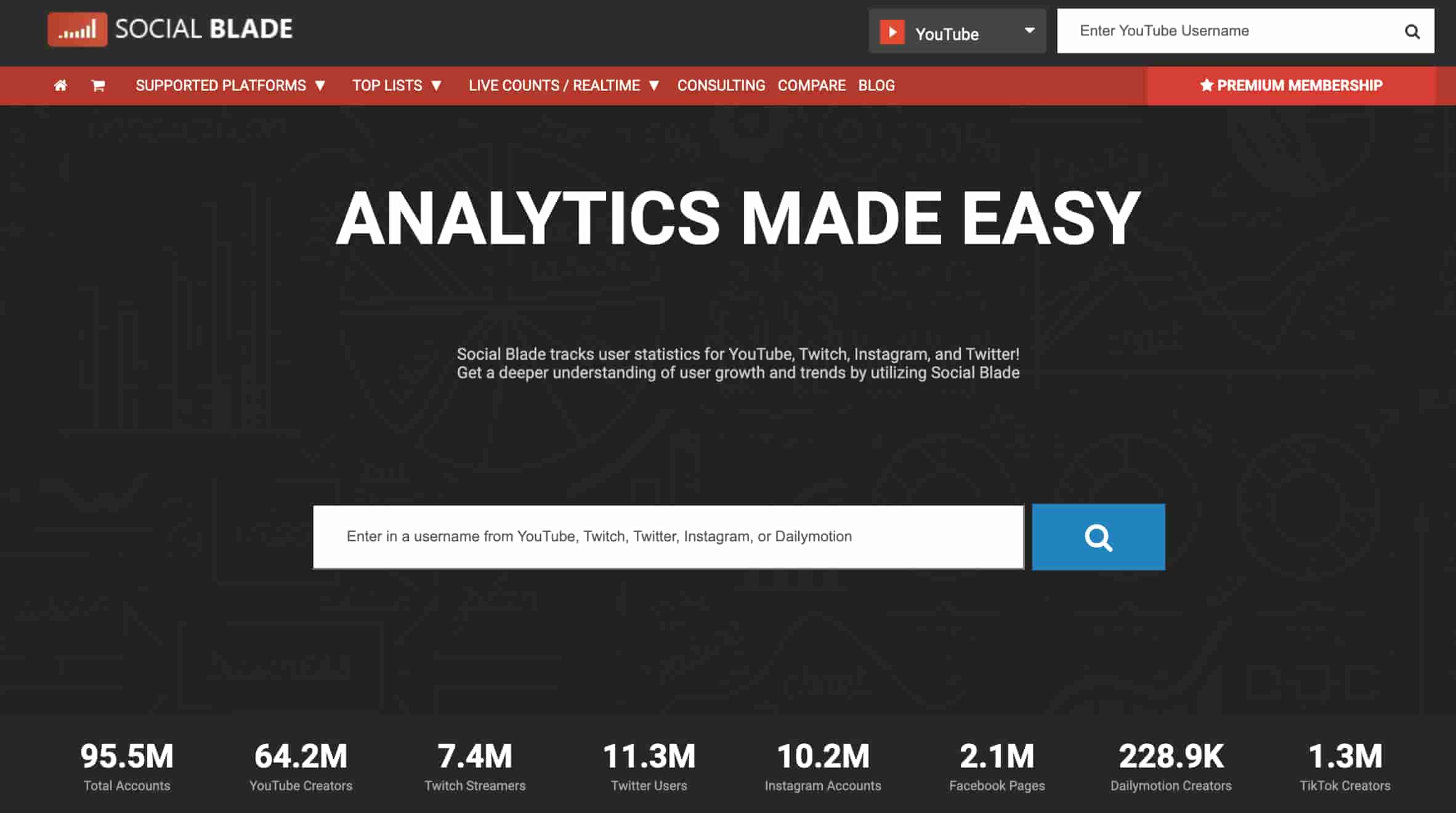
SocialBlade also ranks these accounts, giving a clear picture of where a particular Instagram account stands in comparison to others in various metrics. This information is crucial for benchmarking against competitors and understanding market dynamics on Instagram, helping to refine and optimize social media strategies.
3. Crayon
Crayon can be used for Instagram competitive analysis through its AI-driven features that summarize news and score the importance of information. The platform condenses articles about competitors into key takeaways, which are then sorted by relevance, enabling users to quickly grasp changes in the competitive landscape.
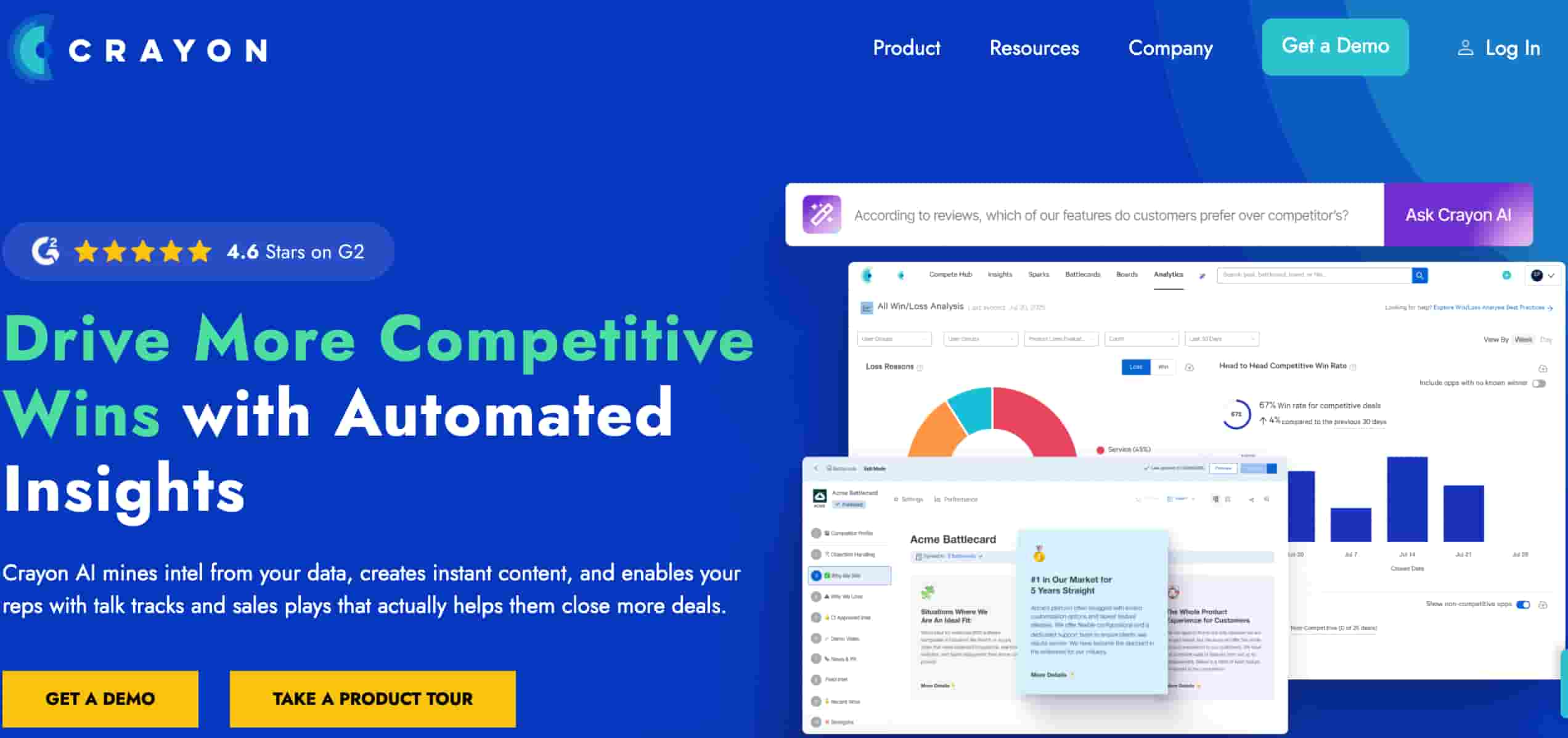
Crayon’s monitoring capabilities ensure that key insights about competitors on Instagram are directly delivered to users’ inboxes, keeping them updated on significant activities and strategies employed by their competitors. This streamlined approach helps in maintaining a competitive edge by staying informed about market trends and competitor movements.
Understanding your Instagram competitor analysis
Now that you have an Instagram Competitor Report, you can begin your analysis. Take the time to soak in the details and reflect on your competitors’ marketing strengths and weaknesses. Pay attention to high engagement rates and top posts to pinpoint potential tactics in your strategy.
If you notice any major spikes or dips, see if the brand has been doing anything differently. For example, if you notice increased followership, look at their profile to see if they have partnered with any influencers or completed giveaways.
Sweep the competition with analysis reporting
The Instagram Competitor Report is part of Sprout’s analytics suite. Share competitive insights—as well as your brand’s Instagram Profiles Report—with stakeholders by emailing PDF reports from Sprout. By doing so, you can demonstrate your brand’s success or secure buy-in for future campaigns.
To learn more about our Instagram Competitor Report, get hands-on and sign up for a free 30-day trial.
Instagram competitive analysis FAQs
Why should businesses prioritize Instagram competitor analysis?
Performing Instagram competitive analysis is a strategic imperative for any brand looking to thrive in today’s digital landscape. By systematically examining your competitors’ approach on Instagram, you can gain invaluable insights that can give you a significant boost to your own performance and market position.
Here’s why it’s crucial:
- Benchmark Performance: It is critical to understand how your Instagram efforts stack up against industry leaders and direct competitors. This competitive benchmarking helps set realistic goals and identify areas where you might be underperforming or excelling.
- Identify Opportunities & Gaps: This benchmarking allows you to discover content formats, themes, or engagement tactics that are working well for competitors but which you haven’t explored. On top of that, you may spot untapped audience sets and their needs or potential gaps in their strategy.
- Refine Content Strategy: Learn what types of competitors’ content resonate most with your shared target audience, inspiring new ideas for visuals, captions, calls-to-action, and even product showcases.
- Optimize Engagement: See how your competitors drive interaction, manage comments, and build community, allowing you to learn and adapt successful engagement strategies.
- Spot Trends Early: Identify emerging content trends, popular hashtags, and shifts in audience preferences within your niche, enabling you to adapt quickly and stay relevant.
What are the best practices for Instagram Competitive Analysis?
To excel on Instagram, understanding your rivals is crucial. An effective Instagram competitive analysis goes beyond competitor profiles; it’s a strategic process that unveils opportunities and optimizes your own performance.
Here are the best practices:
- Define Objectives and Identify Competitors: Clearly state what you want to learn (e.g., set industry benchmarks, content ideas, engagement strategies). Identify both direct competitors and aspirational brands in your niche.
- Track Key Metrics: Monitor follower growth, engagement rates (likes, comments, shares, saves), posting frequency, and optimal posting times.
- Analyze Content Strategy: Examine content formats (Reels, carousels, Stories), visual aesthetics, caption styles, CTA effectiveness, and hashtag usage.
- Assess Audience Interaction: Observe how competitors respond to comments and DMs, and if they leverage user-generated content.
- Utilize Tools: Leverage social media analytics platforms to automate data collection and outo-generate comprehensive reports.
- Regularly Review and Adapt: Instagram is very dynamic and you need to conduct regular analysis to stay updated on trends and continuously refine your strategy based on actionable insights.


Share